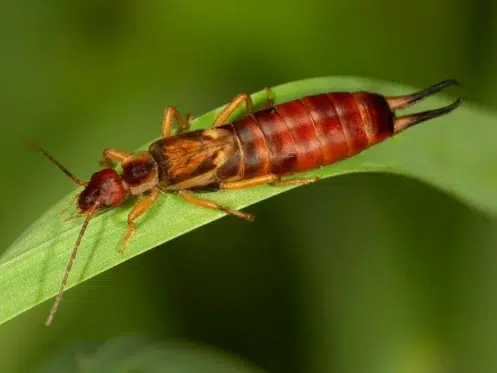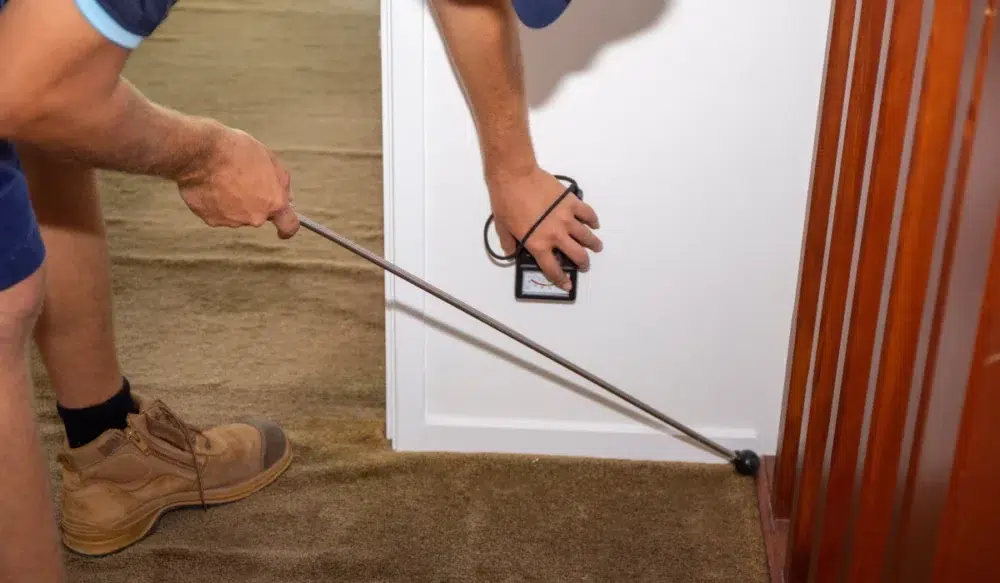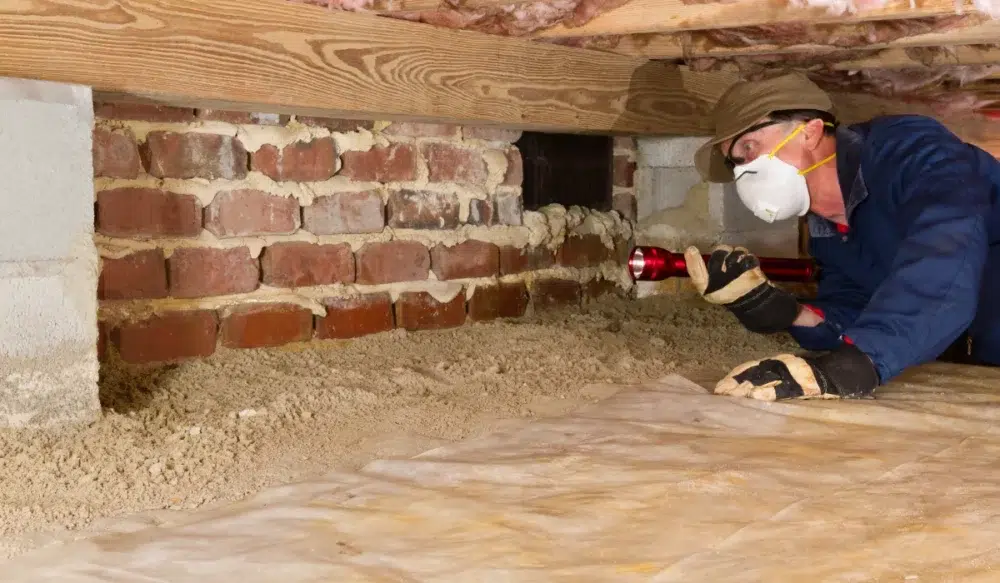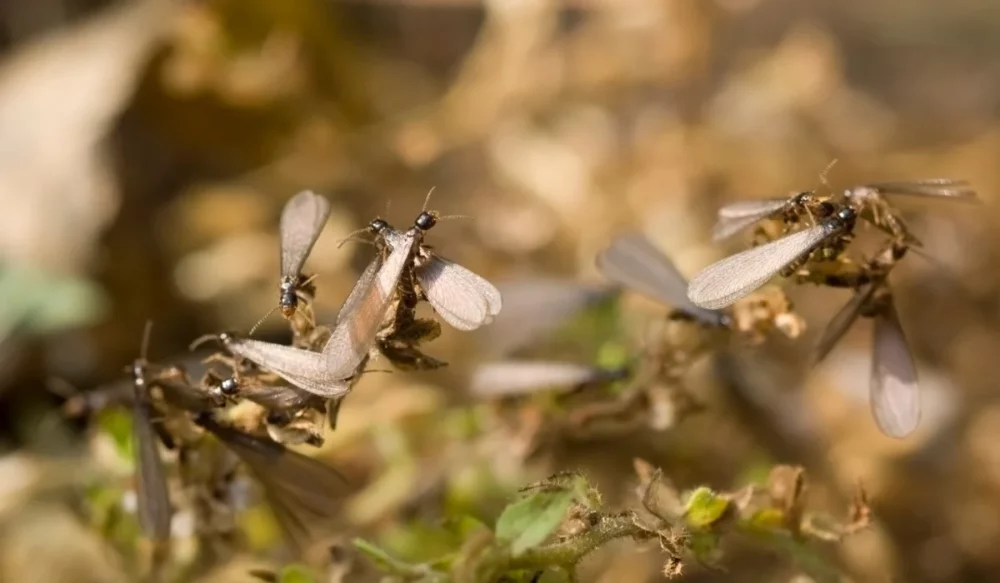Earwigs might look intimidating with their pincers, but they’re more of a nuisance than a danger. Still, no one wants to flip on the bathroom light at night and see one scurry across the floor.
If you’re noticing more of these “pincher bugs” around your Arizona home, especially during monsoon season, it may be time to consider earwig control.
In this article, we’ll explain how to spot an earwig infestation, why it happens in places like Phoenix and Tucson, and most importantly, what you can do to prevent it.
Key Takeaways
- Earwigs are drawn to moist areas and can enter homes through small crevices and gaps.
- While they aren’t harmful, large populations of earwigs can become a recurring pest problem.
- Proper earwig control includes eliminating moisture, sealing entry points, and removing food sources.
- Professional pest control services in Arizona offer eco-friendly, effective earwig treatment options, providing homeowners with a reliable solution to their pest problems.
What Do Earwigs Look Like?
Earwigs are easily identifiable once you know what to look for. They’re slender, dark brown insects ranging from ½ to 1 inch in length. The most distinctive feature? Those curved forceps (also called pincers) are at the back of their abdomen. Males have more curved pincers, while females have straighter ones. You’ll also notice their long antennae and fast, jerky movement when disturbed.
Are Earwigs Dangerous?
Despite their unsettling appearance, earwigs aren’t aggressive. They don’t bite, and while they may pinch if provoked, the force isn’t strong enough to break skin, which is why they are not dangerous.
They don’t transmit disease, damage structures like termites do, or pose a serious health risk. The real problem arises when earwig populations grow and start appearing all over your home, particularly in kitchens, bathrooms, and basements.
Why Are There Earwigs in Your Arizona Home?
Earwigs prefer moist environments, shade, and organic matter. That makes the monsoon season in Arizona the perfect time for them to thrive. You’ll often find them in mulch, under potted plants, or in cardboard boxes in the garage.
In cities like Chandler, Mesa, and Gilbert, heavy summer rains, followed by high humidity, can drive residents indoors.
Earwigs often enter homes through cracks in foundations, gaps in weather stripping, or open doors. Inside, they look for damp spots and food like rotting leaves, aphids, or crumbs.
If you’re seeing them in your bathroom or under the kitchen sink, it’s time to inspect for potential entry points and hidden moisture problems.
Signs of an Earwig Infestation
Seeing one or two earwigs isn’t always a big deal. However, if you regularly spot them in multiple rooms or find them in areas such as sinks, showers, or storage boxes, you may have an earwig infestation. You may also notice:
- Clusters of earwigs under doormats, mulch, or potted plants
- Musty smells in damp areas where they hide
- Damage to garden plants or seedlings from nighttime feeding
If you’re dealing with repeated sightings indoors, it’s time to look into earwig pest control.
How to Get Rid of Earwigs
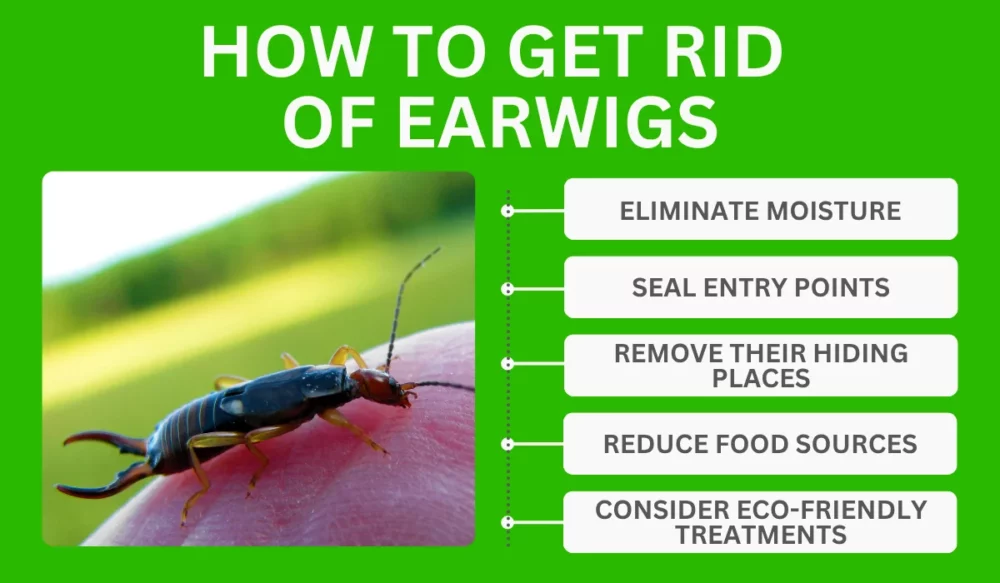
Effective earwig control in Arizona means tackling the problem both indoors and outdoors.
Eliminate Moisture
Earwigs thrive in damp conditions. Start by fixing any leaks, using dehumidifiers, and improving ventilation in areas like basements and crawl spaces. Outdoors, avoid overwatering plants and reduce mulch buildup near your foundation.
Seal Entry Points
Inspect your home for cracks, gaps, or worn weather stripping. Focus on places where utilities enter the house, such as door thresholds and window frames. Use caulk, foam, or new seals to block off crevices.
Remove Their Hiding Places
Cut back overgrown vegetation near your home and avoid stacking firewood or cardboard boxes close to exterior walls. Move decorative rocks and garden mulch away from the foundation. This removes the key shelter for earwig populations.
Reduce Food Sources
Earwigs feed on decaying organic matter, aphids, and other insects. Clean up plant debris, manage aphids in your garden, and keep indoor areas crumb-free. This helps discourage them from settling in.
Consider Eco-Friendly Treatments
For stubborn infestations, a professional pest control company can apply targeted, eco-friendly treatments that are safe for families and pets. At Green Home Pest Control, we offer earwig extermination services tailored to Arizona’s climate and pest habits, ensuring your home is safe and pest-free.
Why Professional Earwig Pest Control Makes Sense
DIY solutions might reduce earwig numbers temporarily, but if you’re still finding them weeks later, the problem likely runs deeper. A trained technician can identify hidden entry points, determine what’s attracting them, and apply effective earwig treatments in and around your home.
At Green Home Pest Control, we provide local service in Phoenix, Scottsdale, Tucson, and surrounding areas. With our extensive knowledge of Arizona’s climate and pest habits, we can effectively rid your home of earwigs using family-friendly solutions. Just give us a call and we will answer your queries.
Stop Earwigs Before They Take Over
You don’t have to live with an earwig problem. By taking a proactive approach to prevention and seeking professional support when needed, you can protect your Arizona home from these unwanted guests. If you’re seeing signs of an infestation, give your home a closer look, or let a pro do it for you.
FAQs
How do I know if I have an earwig infestation?
If you’re seeing multiple earwigs indoors, especially in moist areas like bathrooms or under sinks, you may have an infestation. Outdoor sightings near mulch or plants are also common warning signs.
Are earwigs the same as silverfish or cockroaches?
No. While earwigs all hide in dark, moist spaces, they are separate insects. Their pincers distinguish them, whereas silverfish have a teardrop shape, and cockroaches are broader and faster-moving.
Can pest control get rid of earwigs?
Yes. Professional earwig pest control encompasses targeted treatments, sealing entry points, and reducing moisture, all of which are crucial for long-term relief, particularly during Arizona’s monsoon season.
